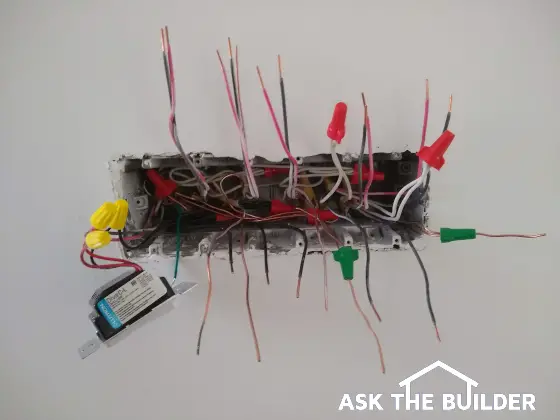The Coefficient of Continuity Origin

Coefficient of Continuity | A large switch box with multi-colored wires like this was a perfect one to use when testing for the coefficient of continuity. (C) Copyright 2020 Tim Carter
The Coefficient of Continuity Origin - Building Lore Truth
I was an active builder and remodeler for over twenty years.
I can tell you that customers come in all different varieties as well as sizes. There are your quiet customers, there are the ones that require sedatives, there are some that are happy, there are the bluebloods, and there are the curious pesky customers.
You know this last type for sure. It's the person who lacks the social skills that allow you to notice when someone is busy. Think about this for a moment. Can you imagine the lowest-level employee in a hospital operating room starting to ask a bunch of questions to a brain surgeon just as he is at the most critical part of an operation where full concentration is required? You've seen this person. This person has bothered you once or twice while you're working.
He's the person that wanders up to a group of workers anywhere, looks at what they're doing, and starts to ask questions not caring for a moment that he's interrupting their work causing them to become less productive. He's oblivious to this work slowdown because he just wants his curiosity appetite satisfied.
I had my fair share of these customers and to a degree, I understand their excitement about progress being made on their new house or room addition. But seriously, do you have to stand there like a creeper and then start to ask questions while I'm trying to get stuff done?
The Prankster
Jim Klawitter was my electrician. He's the inventor of the coefficient of continuity. You'd think some famous mathematician was responsible, but you'd be wrong.
One day Jim, his helper, and me and my crew were working on a large room addition project. The husband owner of the house was there and walked in while we were all as busy as beavers. We said hello and just kept talking and working not trying to engage him at all. We knew what could happen.
Then the questions started. We were courteous at first but soon Jim got perturbed. Normally Jim was as placid as a mountain lake shielded from any type of wind. It took lots to get him whipped into a frenzy.
"Tim, when was the last time you checked the coefficient of continuity?" That was the signal that the fun was to begin.
"I did it about an hour ago. Do you think we should check it again?"
"Absolutely. We've got enough wire pulled we can do it."
I dropped what I was doing and started to walk over to a wall outlet electric box getting out a screwdriver from my toolbelt. As I was doing this I glanced at the homeowner. His face transformed from relaxation to one of high alert. I could see the gears spinning in his head. He, like every other customer, had never heard of this building term much less watch a live test be performed in front of him.
You could tell he was in the fight or flight mode. The questions stopped as he anticipated if the coefficient would be in the acceptable range.
The Prank
Once at an electrical box I'd pull the stripped wires out and put my screwdriver across the ends of the wires holding them against the tip of my screwdriver with my one hand. The other hand would steady the handle of the screwdriver. I'd then bend over and put the handle of the screwdriver against my ear.
In the meantime, Jim would get out his voltage tester which also did continuity tests. This prank was highly effective against even the smartest engineer, but you had to be careful you didn't pull it on an electrical engineer. He'd see through the ruse immediately.
Once I saw Jim put his two probes on any wires where he was, I'd put my ear to the end of the screwdriver handle.
I'd blurt out, "I'm hearing about 580 hertz. Oh wait, it just peaked at 600."
"Go check the outlet across the room," Jim replied. It didn't matter what we checked or did. We were just trying to whip up a good ol' batch of anxiety.
I'd move to another outlet and mind you the wires in the boxes had not yet been connected to one another or anything. We weren't hearing hertz and we most certainly were not testing the continuity of anything.
"Okay, I'm ready," I'd proclaim with my ear against the end of the screwdriver.
Jim would once again touch his probes to the wires at his ceiling outlet or switch box.
"What are you getting now?"
"I'm at 650 with it peaking at 800!"
Jim would act puzzled. "We need two people testing at the same time."
He'd look at the homeowner and say, "Do you have a few newer screwdrivers with no rust and how's your hearing? Did you play an instrument in your high school band by any chance?"
Every time the homeowner said, "Uh, uh no. Uh, I wasn't in a band and I'm not sure I could hear what's going on. Plus, my screwdrivers are pretty beat up."
The next thing we knew he'd be gone. Once he was out of earshot for sure, we'd all have a pretty good laugh and get back to work.
I urge you to try this prank or a similar one. You need to have self-control and not laugh during the test. But you knew this!
5 Responses to The Coefficient of Continuity Origin